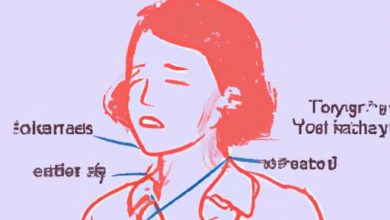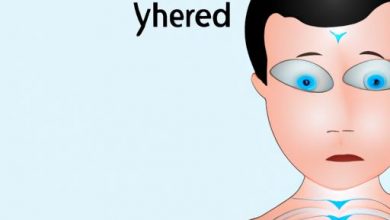How to Reverse Fatty Liver Disease: A Comprehensive Guide
Fatty liver disease is a condition where excess fat builds up in the liver, leading to inflammation and damage. It is a prevalent condition affecting millions of people worldwide, and if left untreated, it can progress to more severe liver diseases such as cirrhosis and liver cancer. Fortunately, fatty liver disease is reversible, and with the right steps, you can prevent further damage and restore your liver’s health.
Understanding Fatty Liver Disease

Fatty liver disease is a result of an unhealthy lifestyle, including a diet high in saturated fats, refined carbohydrates, and sugar, lack of physical activity, and excess alcohol consumption. When you consume more calories than your body needs, the excess calories are stored as fat, and when the liver cannot break down the fat fast enough, it accumulates in the liver, leading to fatty liver disease.
There are two types of fatty liver disease: alcoholic fatty liver disease and non-alcoholic fatty liver disease (NAFLD). Alcoholic fatty liver disease occurs due to excess alcohol consumption, while NAFLD is associated with metabolic disorders such as obesity, insulin resistance, and type 2 diabetes.
Symptoms of Fatty Liver Disease
In the early stages, fatty liver disease may not cause any symptoms, and it is often diagnosed incidentally during routine blood tests or imaging studies. However, as the condition progresses, it can lead to symptoms such as:
- Fatigue
- Abdominal pain
- Loss of appetite
- Weight loss
- Jaundice (yellowing of the skin and eyes)
- Swelling in the legs and ankles
If you experience any of these symptoms, it is essential to consult your healthcare provider for diagnosis and treatment.
Diagnosis of Fatty Liver Disease
To diagnose fatty liver disease, your healthcare provider may perform the following tests:
- Blood tests: Elevated liver enzymes may indicate liver damage.
- Imaging studies: An ultrasound, CT scan, or MRI can show the amount of fat in the liver.
- Liver biopsy: A small sample of liver tissue is taken and examined under a microscope to determine the extent of liver damage.
It is essential to diagnose fatty liver disease early to prevent further damage to the liver. If left untreated, it can lead to more severe liver diseases such as cirrhosis and liver cancer.
Treating Fatty Liver Disease
The treatment of fatty liver disease depends on the underlying cause and the extent of liver damage. Here are some effective ways to reverse fatty liver disease:
Lifestyle Changes
The first step in treating fatty liver disease is to make lifestyle changes such as:
- Losing weight: Even a modest weight loss of 5-10% can improve liver health.
- Eating a healthy diet: A diet rich in fruits, vegetables, whole grains, and lean protein can improve liver health.
- Exercising regularly: Regular physical activity can reduce liver fat and improve liver health.
- Avoiding alcohol: If you have alcoholic fatty liver disease, it is essential to stop drinking alcohol.
Medications
In some cases, your healthcare provider may prescribe medications to treat fatty liver disease. Medications such as pioglitazone, vitamin E, and ursodeoxycholic acid have been shown to improve liver health in people with NAFLD.
Alternative Therapies
Some alternative therapies such as milk thistle, N-acetylcysteine, and omega-3 fatty acids have shown promise in improving liver health. However, more research is needed to determine their effectiveness.
In conclusion, fatty liver disease is a reversible condition, and with the right steps, you can improve your liver health and prevent further damage. By making lifestyle changes, taking medications, and exploring alternative therapies, you can reverse fatty liver disease and live a healthy life. If you suspect you have fatty liver disease, consult your healthcare provider for diagnosis and treatment. Remember, prevention is always better than cure.
Treating Fatty Liver Disease
The first step in treating fatty liver disease is to make lifestyle changes that promote liver health. This includes:
- Dietary changes: A healthy diet that is low in saturated fats, refined carbohydrates, and sugar can help reduce inflammation in the liver and promote weight loss. Foods that are good for the liver include:
- Fruits and vegetables
- Whole grains
- Lean protein sources such as fish and chicken
- Nuts and seeds
-
Exercise: Regular physical activity can help improve insulin resistance and reduce inflammation in the liver. Aim for at least 30 minutes of moderate-intensity exercise most days of the week.
-
Weight loss: Losing weight can help reduce the amount of fat in the liver and improve liver function. Aim for a gradual weight loss of 1-2 pounds per week through a combination of diet and exercise.
-
Limit alcohol consumption: If you have alcoholic fatty liver disease, it is essential to limit or stop alcohol consumption completely. If you have NAFLD, it is still recommended to limit alcohol consumption to one drink per day for women and two drinks per day for men.
In some cases, medication may be prescribed to treat fatty liver disease. However, medication should always be used in combination with lifestyle changes and under the supervision of a healthcare provider.
Prevention of Fatty Liver Disease
Preventing fatty liver disease involves making healthy lifestyle choices that promote liver health. Here are some tips to prevent fatty liver disease:
-
Maintain a healthy weight: Being overweight or obese increases your risk of developing fatty liver disease. Aim for a healthy BMI (body mass index) between 18.5 and 24.9.
-
Eat a healthy diet: A diet that is low in saturated fats, refined carbohydrates, and sugar can help prevent fatty liver disease. Include plenty of fruits, vegetables, whole grains, and lean protein sources in your diet.
-
Exercise regularly: Regular physical activity can help prevent fatty liver disease by improving insulin resistance and reducing inflammation in the liver.
-
Limit alcohol consumption: Excessive alcohol consumption can lead to alcoholic fatty liver disease. It is essential to limit or stop alcohol consumption completely to prevent liver damage.
-
Manage underlying medical conditions: Medical conditions such as obesity, type 2 diabetes, and high cholesterol increase the risk of developing fatty liver disease. Managing these conditions through lifestyle changes and medication can help prevent fatty liver disease.
By making these healthy lifestyle choices, you can reduce your risk of developing fatty liver disease and promote liver health. Remember to consult your healthcare provider if you experience any symptoms of fatty liver disease or if you have any concerns about your liver health.
Conclusion
Fatty liver disease is a reversible condition that can be treated with lifestyle changes and medication in some cases. By making healthy lifestyle choices, you can prevent fatty liver disease and promote liver health. Remember to consult your healthcare provider if you have any concerns about your liver health. Zahnweiss Info is dedicated to helping you live your healthiest life by providing the latest updates on health news, treatments and therapies, inspiring patient stories, and expert advice.




